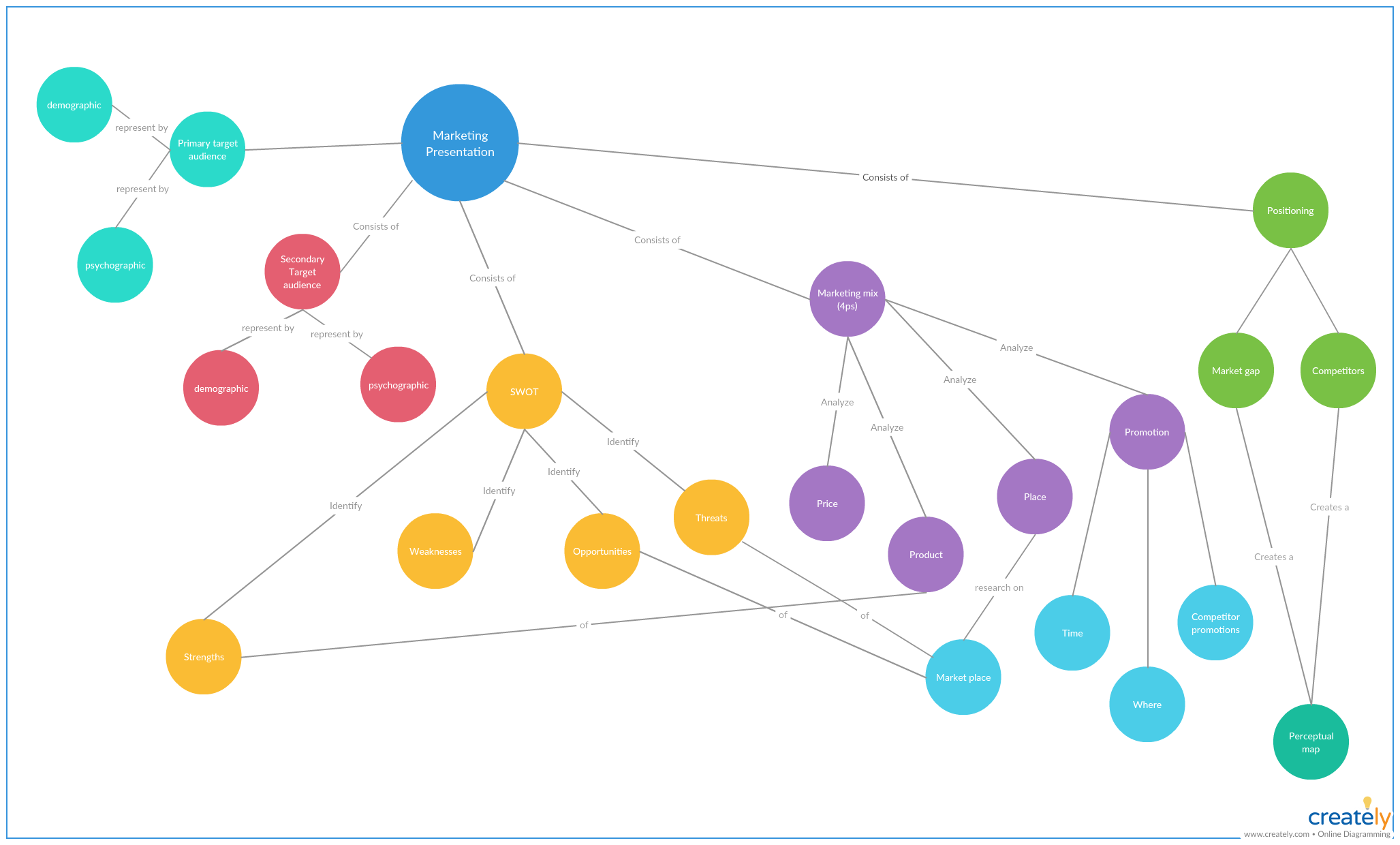Written b: Amanda Athuraliya
Coming up with fresh new ideas isn’t always so easy. There are times even the typical brainstorming techniques with your teamwould hit a roadblock.That’s when you should try something new. Maybe go about brainstorming ideas in a whole new way.We’ve got 7 effective brainstorming methods you can use to quickly brainstorm and generate ideas through drawing, writing and diagramming.The visual brainstorming techniques we’d be looking at areEnhance Brainstorming with Mind Maps
Mind maps are a tool used to visualize and organize information. Capturing your free flow of ideas using a mind map during brainstorming will help you quickly make sense of the relationships between the information you come up with. They are also a great way to break down an idea and analyze it. How to do it;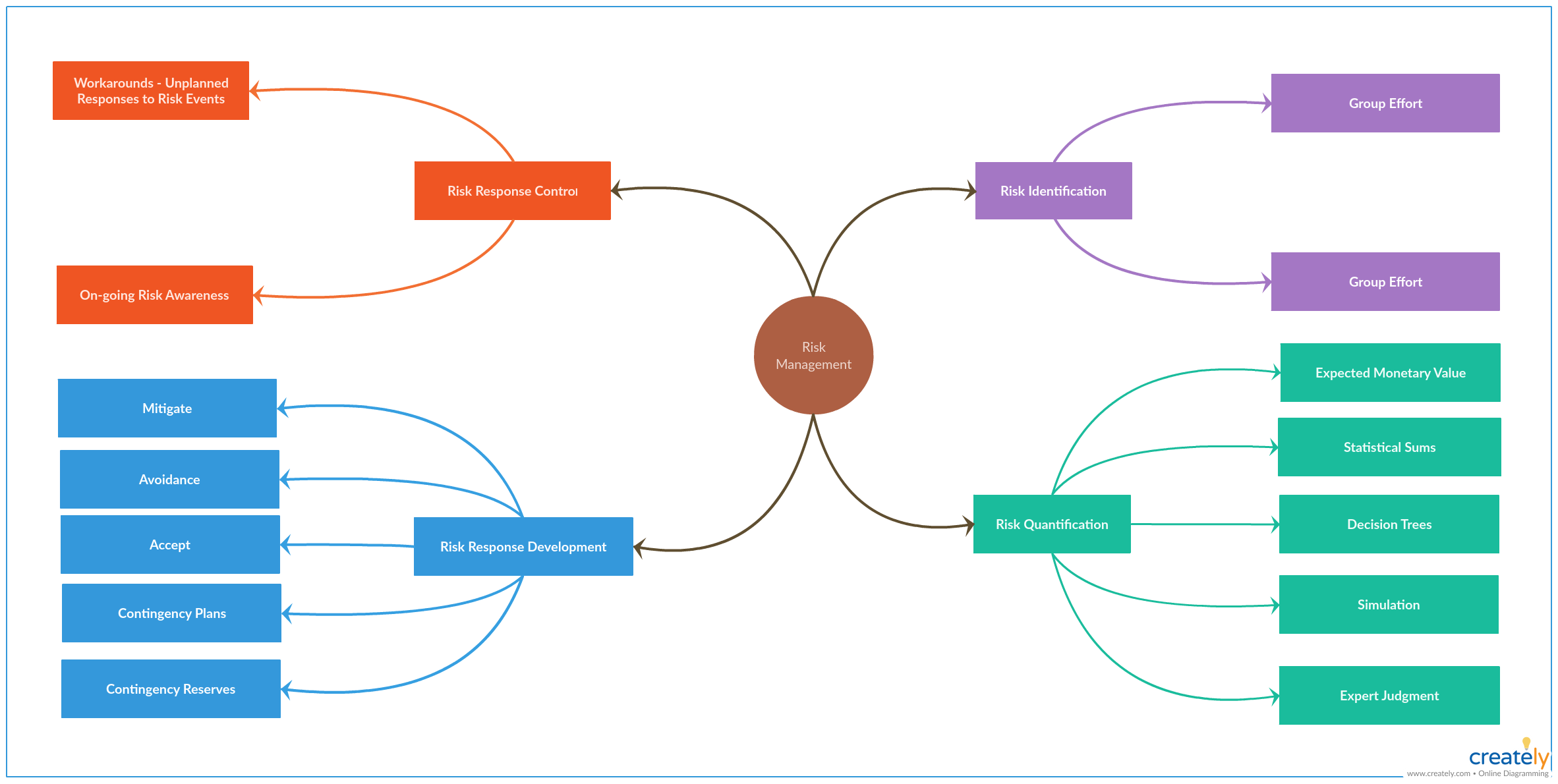 Get more mind map templates.
Get more mind map templates.Reverse Brainstorming with Fishbone Diagrams
In reverse brainstorming, instead of finding solutions to a problem, you wonder how to cause it or how to achieve the opposite result of what you expect.Fishbone diagrams, which is typically used to find the causes of an effect (hence named cause and effect diagram), can be used to facilitate a reverse brainstorming session. How to do it;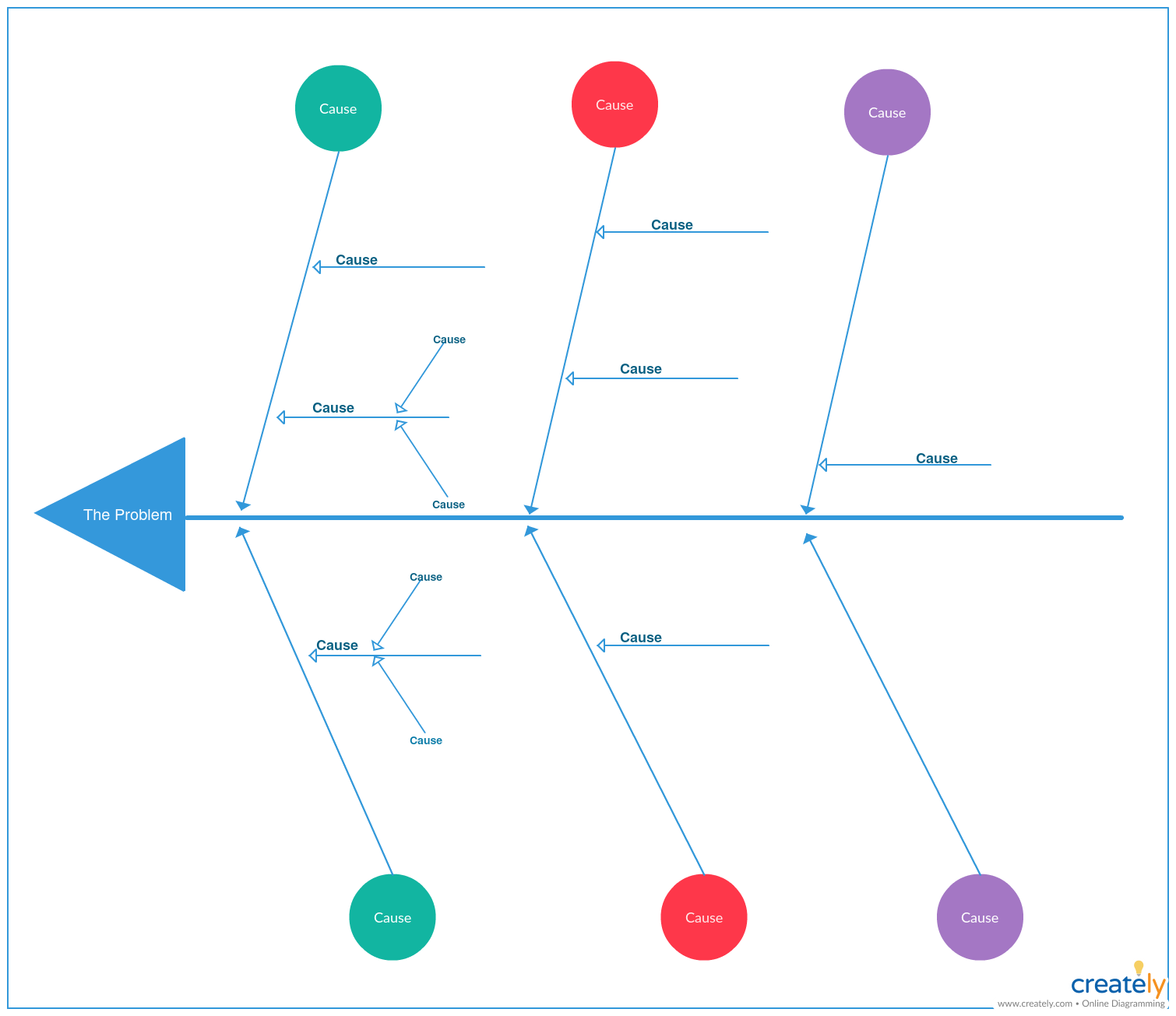 Get more fishbone diagram templates.
Get more fishbone diagram templates.Gap Filling and Developing Processes with Flowcharts
Gap filling is basically about finding where point A (i.e. current situation of your business) is and figuring out the steps you need to take to get to point B (i.e. business goals you want to achieve).You can use a method like flowcharts that maps process steps, to easily carry out a gap filling brainstorming exercise. Following is a free flowchart template you can use to start with. How to do it;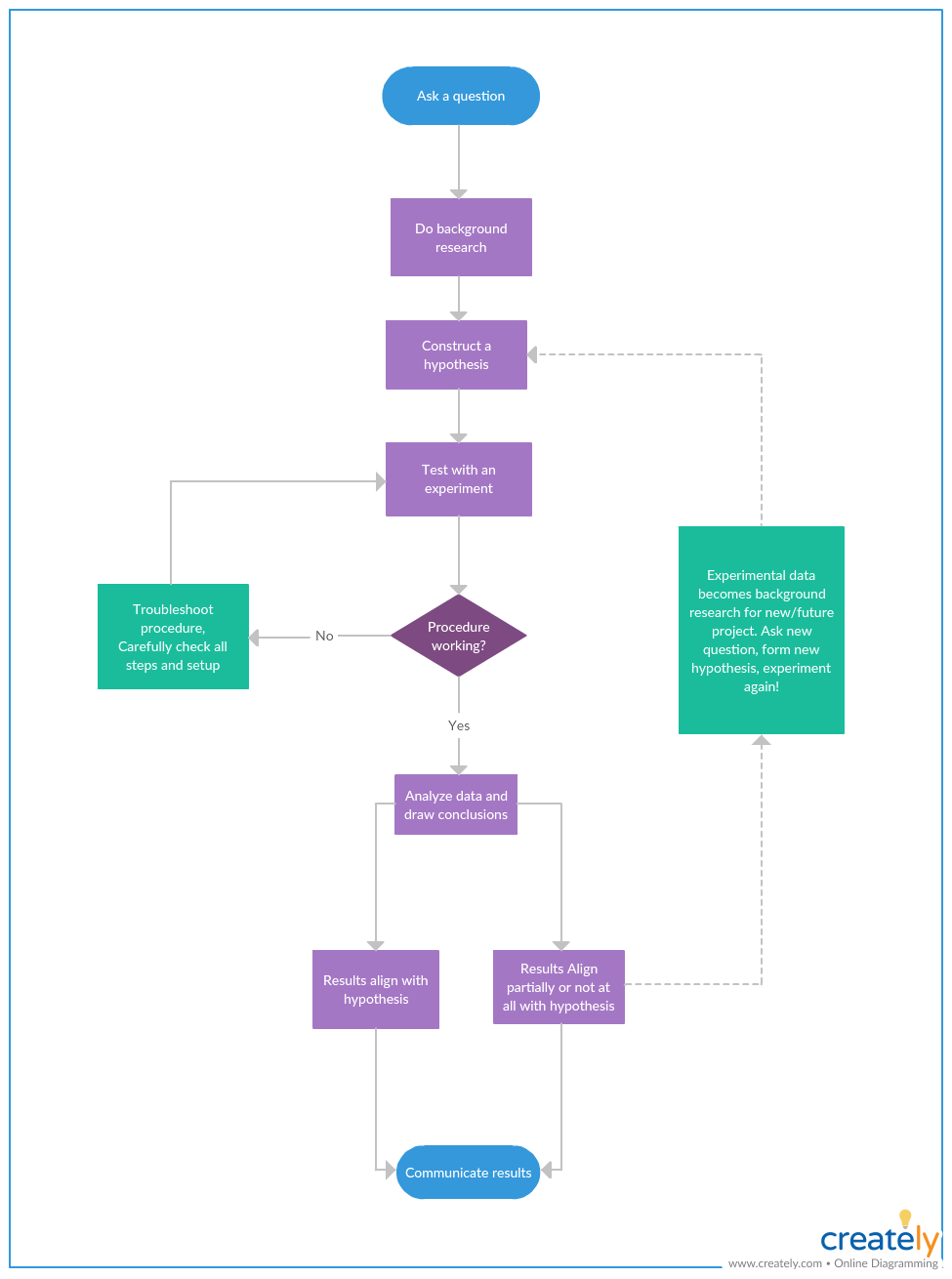 Get more flowchart templates.
Get more flowchart templates.Situation Analysis with SWOT Analysis
SWOT analysis is a summary tool that lets you analyze the internal (Strengths and Weaknesses) and external (Opportunities and Threats) factors of your business. If you are creating a new business plan or simply planning ahead, you can use a SWOT analysis to identify where you stand as a business. How to do it;Not entirely sure how to incorporate a SWOT in your brainstorming session? Here’s how to use a SWOT analysis effectively.Plus, if you are doing a competitor analysis before making your move, you can also do a SWOT analysis for each of them. It’ll make it easy for your team to decide what steps should be taken and how to avoid the barriers ahead.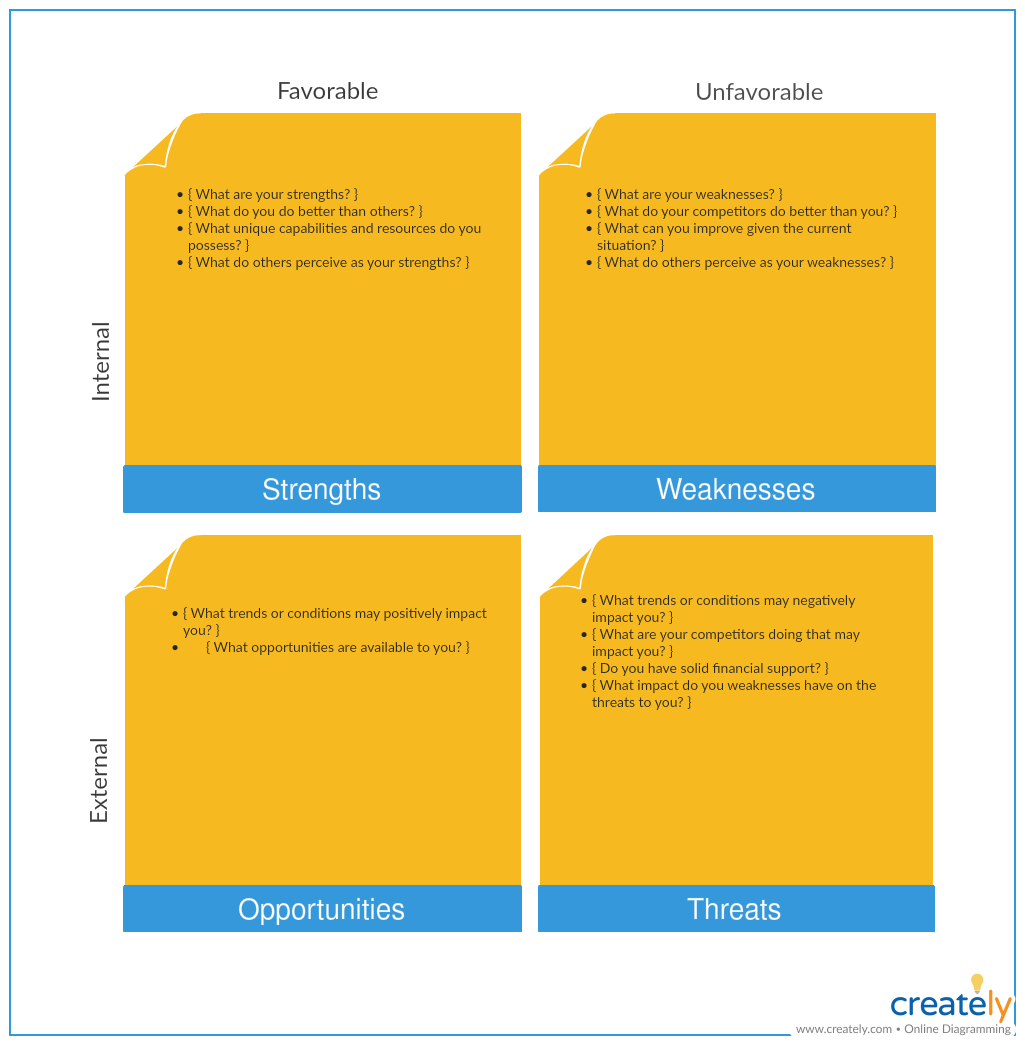 Get more SWOT analysis templates.
Get more SWOT analysis templates.Find Solutions to Issues with Starbursting
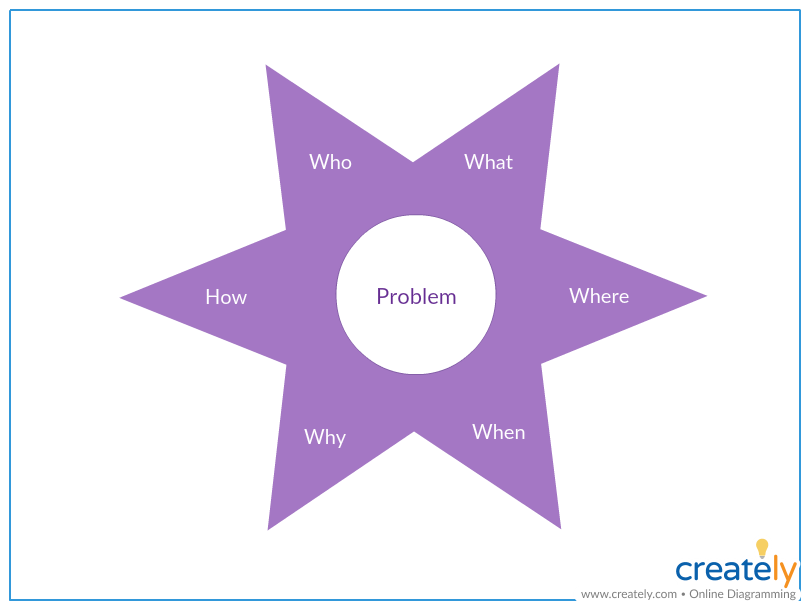 Instead of directly discussing solutions, starbursting gets you and your team to examine the problem first by asking not just the 6 key question, but also several other questions as necessary. How to do it;
Instead of directly discussing solutions, starbursting gets you and your team to examine the problem first by asking not just the 6 key question, but also several other questions as necessary. How to do it;Organize Information with Affinity Diagrams
Brainstorming around a topic generates a flood of information. At times it can be difficult to review or make sense of any trends the data may indicate. Affinity diagrams allow you to neatly arrange and group ideas so that it would be easy to read and analyze. How to do it;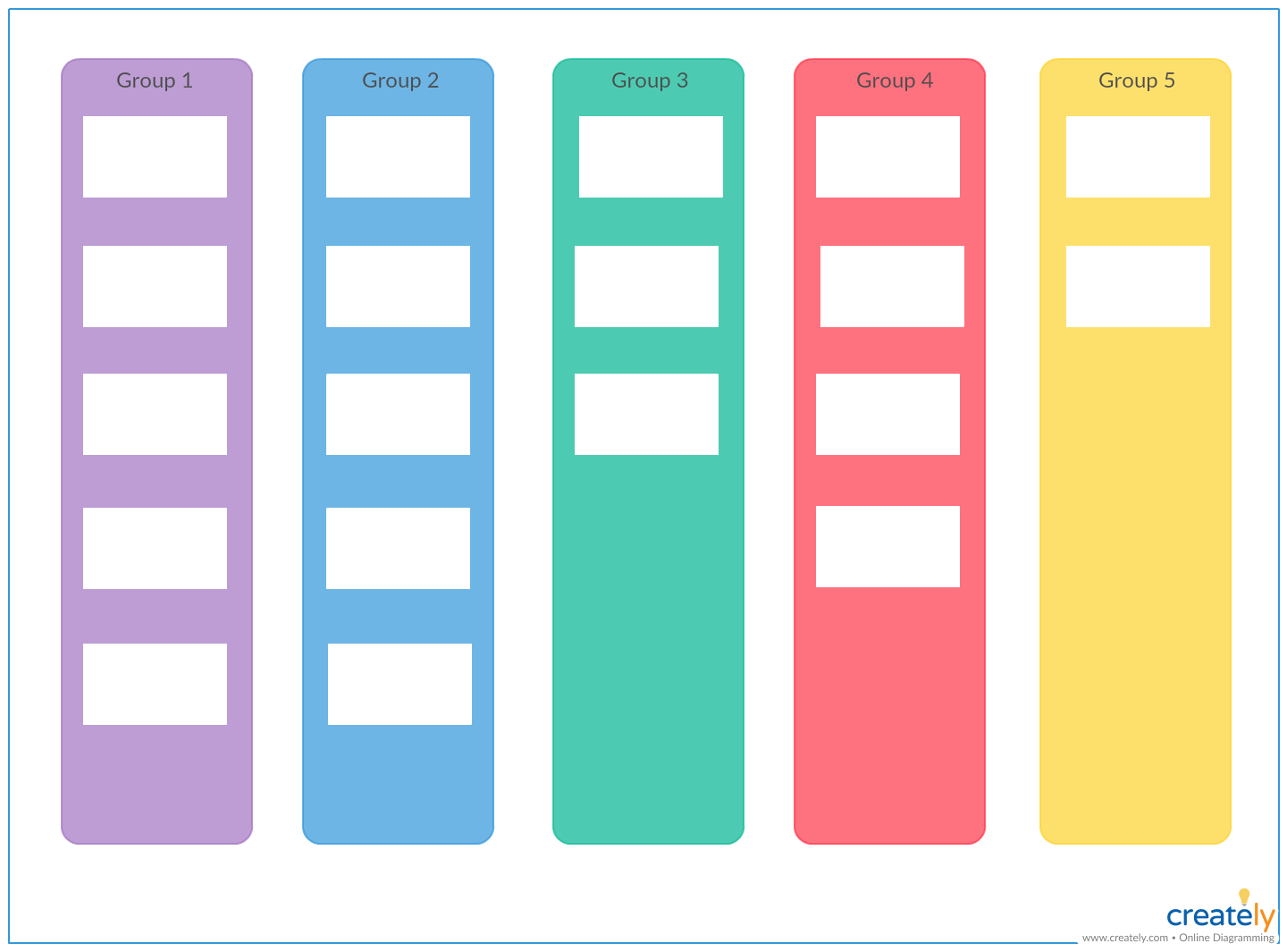
Analyze Relationships between Concepts with Concept Maps
Concept maps are a learning and teaching technique that is used to identify the relationships between ideas or concepts. They help properly structure thoughts that are thrown around in a brainstorming session in a way that is easier to understand. How to do it;